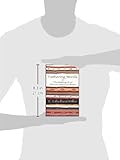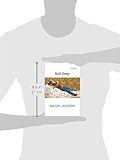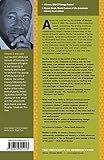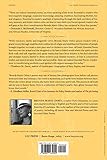Introduction
ABSENT TREES AND ROPE
By Brenda Marie Osbey
From May through October, whites beat, stabbed, shot, lynched, burned at the stake and stomped to death more than six dozen African Americans in one of the most horrific seasons of racist violence in the United States since the end of slavery. Poet, essayist, editor and NAACP Field Secretary James Weldon Johnson dubbed it the Red Summer of Hate of 1919. And it has been known by that name ever since. At the height of it all, the July issue of the progressive journal The Liberator carried seven poems by Claude McKay under the title “Sonnets and Songs.” The closing poem of that group was “If We Must Die.” Written in response to the terror then stalking the nation, it embodies the unflinching spirit of a generation of African Americans refusing to bow to the savagery of white supremacist invective, assault and murder.
Concentrated though it was in such a short and bloody span, Red Summer was, in fact, only one of many peaks in the continuum of anti-African American aggression.
It is not the creature of an hour, the sudden outburst of uncontrolled fury, or the unspeakable brutality of an insane mob. It represents the cool, calculating deliberation of intelligent people who openly avow that there is an “unwritten law” that justifies them in putting human beings to death without complaint under oath, without trial by jury, without opportunity to make defense, and without right of appeal.
Those words were written in 1900, and spoken before an audience in Chicago by the nation's first recognized authority on the subject. From 1892 until 1931, the clearest, most consistent, constant and indefatigable anti-lynching activist and scholar in the United States was African American newspaper-woman Ida B. Wells. Armed with pistols, she traveled the country by train documenting and reporting lynching incidents, details and statistics. She reported, for instance, that the 1890's saw one hundred or more such crimes per year, with the “high-water mark” year of 1892 boasting 160 lynchings of African American men, women and children in every quarter of the United States.
The post-Reconstruction era of 1878 through World War I is known as the Nadir precisely because of the decline and loss of citizenship rights so recently gained by African Americans, the especially low value of Black lives in the U.S., and the absence of redress or prosecution of hate crimes, including lynching. In the same year as her “Lynch Law in America” speech, Wells published the first and definitive account of the Robert Charles Incident in New Orleans, in which Charles, an African American, stands up to white police officers who beat and shoot him, holding them and a white mob of several thousand at bay for four days. Continually returning fire with bullets he forged in the Saratoga Street house he escapes to, Charles kills twenty-seven whites, including four policemen before dying a martyr's death, his bullet-ridden body dragged to the street and stomped beyond recognition.
The current climate of anti-Black violence and violation is reminiscent of that low-point, especially in its flagrance. Just as lynchings were public events of which photographic postcards were made and circulated through the United States postal system without fear of prosecution, an added element of the present era is that much, if not all, of the violence against African Americans today is captured on video, either by witnesses with cellular telephones, or, in the case of police brutality and murder, events are recorded via officers' own dashboard and body cameras. Thus we have complete documentation of the murder of Walter Lamar Scott by a white police officer in North Charleston, South Carolina. Video footage shows clearly that, in the course of a routine traffic stop for a non-functioning brakelight, Michael Slager twice used his Taser, then fired eight rounds, striking Scott no fewer than five times – in the back, buttocks, ear and heart – while the man fled on foot.
It's worth noting also that, as in the years of the Nadir, and nearly every decade since, African American churches continue to be favored sites of aggression and assault by white supremacists. In June of this year, for instance, Dylann Roof sat in a pew of Emanuel African Methodist Episcopal Church in Charleston and participated in Wednesday night prayer service with the congregants there, before opening fire and killing nine people, in the hopes, he said, of instigating a “race war” because African Americans, in his view, are “taking over the world.” Not an iota of irony is lost on even a single person of African descent that “Mother Emanuel” is famed across this nation as the home church of Denmark Vesey, leader of the 1822 slave rebellion popularly known as the Charleston Rising.
Since 2012, African Americans have been symbolically donning hoodies, executing the hands-up gesture; carrying placards instructing observers that “Black Lives Matter,” “I Can't Breathe,” or simply, “Don't Shoot!”; as well as “dying-in” on the streets of major cities and minor suburbs. None of this has stopped the blatant murders of African American men and boys by both police officers and civilians; the public police brutalizing of a fourteen-year-old, swimsuit-clad African American girl dragged from a pool party and thrown facedown to the ground by a white Texas police officer within sight of child and adult witnesses as well as other police officers; the supposed suicide-by-hanging death of a young woman in a Texas jail cell after having been stopped and menaced for failing to signal a lane change; the choke-hold death of an asthmatic man, and more. Many, many more.
In his 1937 memoir, A Long Way from Home, McKay writes about the poem that established him as a poet of the people, and the moment within and against which it was composed. Like many, McKay was then working at one of the few jobs available to university-trained African American men of his generation – as a Pullman railcar waiter. He writes that “Negro newspapers were morbid, full of details of clashes between colored and white, murderous shootings and hangings.” He recalls especially that he and his fellows were thus “nervous.... less light-hearted,” wary of separating from one another long enough to frequent speakeasies or gambling houses. Instead:
We stuck together, some of us armed, going from the railroad station to our quarters. We stayed in our quarters all through the dreary ominous nights, for we never knew what was going to happen.
It was during those days that the sonnet, “If We Must Die,” exploded out of me. And for it the Negro people unanimously hailed me as a poet. Indeed, that one grand outburst is their sole standard of appraising my poetry. It was the only poem I ever read to the members of my crew.
African American poets and writers of conscience have historically refused to remain silent in the face of racist violence and abuse. The poets gathered here represent a tradition both of standing and of writing on the side of justice.
Duriel E. Harris
“He who fights with monsters”
How many does it take to metamorphose wickedness into righteousness?
One man must not kill. If he does, it is murder. Two, ten, one hundred
men, acting on their own responsibility, must not kill. If they do, it is still
murder. But a state or nation may kill as many as they please, and it is
not murder. It is just, necessary, commendable, and right.
—Adin Ballou (1803-1890)
Wer mit Ungeheuern kämpft, mag zusehn, dass er nicht dabei zum
Ungeheuer wird. Und wenn du lange in einen Abgrund blickst, blickt der
Abgrund auch in dich hinein.
Jenseits von Gut und Böse, “Sprüche und Zwischenspiele,” 146 (1886)
—Friedrich Wilhelm Nietzsche (1844-1900)
“How many acts of genocide does it take to make genocide?”
How many birds to call it a flock?
How many drops to make a sip swell into a spill?
How many does it take for a quorum?
How many does it take to trend?
How many does it take to be in a race?
How many to seek and destroy?
How many lanterns, ribbons, needles, balls, and bouncing bouncing betties?
How many does it take to fix it?
How many does it take to swing?
Just how many licks does it take to get through the meat to the red and yellow marrow?
How many does it take to decide?
How much ammo, how many tanks, how many bombs, pits, and traps, how many swinging spiked logs?
How much debris?
How many fences and patrols? How many stockpiles?
How many does it take to constitute a “deluge?”
How many for a good hunt? To haul the load? To pave the drive?
How many does it take to persist?
How many stones for a good throw? How much shot? How many dry cords? How much
seed?
How many charts does it take to fill the set? How many monitors for the mix? How much
gear?
How many cast iron pots? How many non-porous pouches? How many spades and
shovels? How much tubing?
How many seconds to raise the plow? To go blank? To go under? To spontaneously
combust?
How many masses does it take to make a city? How many pipes and drains?
How many of any to make a horde?
How many to create a virus? To pass the pandemic two by four?
To hack the lot? To hack up a lung? To hack the hackneyed phrase?
How many does it take to pluck a turkey clean?
You do the work: what materials, what tools are required?
How many does it take to put the facts straight?
How many does it take to invade?
How many to make a conspiracy?
How many to settle the score? To furnish the proper argument?
Proceeding by stealth, how many does it take to slip off the yoke?
How long and how many to get the greasy thing back in the bag?
If we start counting now, how many episodes?
How many features? How many angry disruptions? How many chokeholds? How much
tape reel to reel?
How many sackcloth dummies? How many planks and nails? How much thread and
glass? How many wicks? How much gasoline?
Given the necessary conditions, how many behaviors? How many reactive responses to
minor stimuli? How many frantic efforts? How many impulsive outbursts? How
much dysphoria? How intense?
How much water? How much voltage? How many plastic liners?
How many does it take to manipulate the order and the nonautonomy of its field of
action?
How many porters? How many pickets? How many wood dowels and ditches?
How many does it take?
How many, in the face of negative but transient public opinion?
How many sheets? How many moo moos? How many scouts? How many badges?
How many surveillance cameras? How many transcripts, interviews and surveys? How
many laws of the land? How many well-laid mine fields?
How many false statements? False starts? False prophets? False teeth?
How many articles? How many volunteers? How many exercises? How many
disclaimers?
How many people? How many times? Would you remember them all?
How many have you tried?
(A cedar box for you; one, two, three body rakes for me.)
How many does it take? When will they tell us? What is the sampling error?
How many and how much does it cost?
How many to form a committee? To make it stick?
How many limbs to earn the medal?
How much restless fury? How much saliva? How much froth?
How many does it take if they’re kicking in flimsy doors and rushing the cockpit?
How many if they hang like bats from trees?
How many twisted triangular signs?
How many smudged tactical maps?
How many unexplained casualties? How many aggregates? How many comprehensive
national accounts? How many derivations? How much fiscal and
monetary policy? How much uncertainty to crowd them out? How much inflation? Who
and how many will it take to gate and guard the growth? How many reindeer?
How many rejoinders? How many relapses? How many rejection slips? How
many rounds? How high the fever? How much relational grammar? How many to
get the maximum benefit? To flourish in the context of capital? In direct relation
to what is missing? How many by force and with intention?
I have 53 honorable kills, how many does it take?
The reason that something is an example, a fold (how many does it take to define a
problem? (a predicate)), an economy of virtual knowns, interrupts.
We've been suggesting for almost a month now—how many does it take? Also, we've run
out of steam. (How many does it take? They may not even be people.
What the fuck’s in them and how many does it take to kill you?
How many undersigned and you know who’s? How many taxpayers? How many
conventions? How many leagues of concerned citizens? How many symbols?
How many sights?
How many warnings? How many wrenches? Beware! Beware! Beware! Beware!
How many from behind and beneath? How many pulling rope, stretching hemp? How
many flags? How many knights?
How many sepulchers and bloody moons? How many stakeholders?
How many bound together?
How many mounting the air?
How much matter by volume, to scale?
The question is not how many links in the chain, the question is how many can be made
available and how quickly dispersed?
In a population of x, how many does it take before everyone has been infected?
How many repeated read-alouds?
How many does it take for Christ to be in the midst?
How many does it take to wrestle him, sit on him, pin him to the ground? How many
does it take to hold him down?
How many until none becomes some?
How many does it take to form a STATISTICALLY SIGNIFICANT pattern.
Get another arm, another ear, “How many does it take til it's enough?” “How much do
you need?''
How many does it take to make the road impassable when the rain brings the brew to the
surface?
“Let us see the bodies,” they say.
Author's Note:
Translation of epigraph by Nietzsche. “He who fights with monsters should be careful lest he thereby become a monster. And when you gaze long into an abyss, the abyss also gazes into you.”
Beyond Good and Evil, “Aphorisms and Interludes,” 146 (1886).
Major Jackson
Ferguson
Once there was a boy who thought it was a noble idea to lie down in the middle of the street and sleep. For four hours, no one bothered him, but let him lie on the road as though he were an enchantment. This became newsworthy and soon helicopters hovered above, hosing his curled torso and thick legs in spotlights televised the world over. Foreign correspondents focused on the neighborhood and its relative poverty as recognized by the plethora of low-hanging jeans worn by shirtless men and loud music issuing from passing cars, which had the effect of drowning out everyone’s already suppressed thoughts about the boy sleeping in the middle of the street; others jumped in front of cameras seizing an opportunity to be seen by their relatives on the other side of town because they had run out of minutes on prepaid cellphones.
The roadkill in the neighborhood, and some on that very block, rodents, cats, and possums, feeling equal amounts of jealousy and futility, each begin to rise and return to their den holes, cursing the boy sleeping in the street beneath their breaths for his virtuosic performance of stillness and tribulation in the city. The drug-addicted homeless leaning into doorways like art installations were used to being ignored, but they, too, felt affronted and folded their cardboard homes.
For the first hour, he practiced not breathing. For ten seconds, he would hold his breath. And then, he practiced longer sets of minutes during the next three hours until he was able to stretch out his non-breathing for whole hunks at a time. When his breathing returned, it was so faint, his chest and shoulders barely moved, infinitesimal amounts of life poured out of him, but no one noticed. The police cordoned off his body, and after some time, declared him dead because they had only seen black men lying prone on the street as corpses, but never as sleeping humans.
The whole world, eager and hungry for a Lazarus moment, watched and waited to see when he would awaken and rise to his feet, especially his neighbors with minutes remaining on their cellphones who filmed and animatedly discoursed behind yellow tape the ecstasies and muted sorrows of watching a boy sleep in the middle of the street.
Afaa Michael Weaver
What a Fellowship
for Mother Emanuel A.M.E., delivered at Northeastern University 6/23/15
In these clasped hands we see the seeds
of what has come to be, the tiny black faces
of children chained into ships headed to sea,
not an invitation to a better life, not a vote
for the human, but the deadened greed, a wish
against what life means to the living, a cruelty
above the requirements of evil, our ambition
to live, to survive, to grow beyond chains now
our only hope in row after row of bloody pews.
In these clasped hands we see the business
of selling human beings, white hands of banks,
the black hands of enemies selling enemies
to regal promenades in France, in Belgium,
to arrogant philosophies of enlightenment,
a plodding Kant, a foolish Hume, murderers
in the name of knowledge, architects of theft,
a broad sweep to rape the world and grow fat,
to assume, to consume, to accumulate, to kill.
In these clasped hands we see the endless heart,
proud hands that bent heads down to save them,
caring souls that made a new love from carnage,
the wreckage of lives, piles of bones crumbling
to dust in mounds all around, forming breath
from stench, forming the sweet Sunday dinner
after church, after gathering around the Word
of this new God with a promise of a redeemer,
a hand with the power to end death’s bondage.
In these clasped hands we hear the songs,
the mourning, the celebrations from worlds
left in Africa, forgotten except in the pulse
of what we remember of the drum, the stomp
of holy dances, of invoking the holy spirit
to visit, opening our prayer to wind, to fire
to the great wash of oceans, to mountains
rising and falling in visions, to dominions
over fish, fowl, beast in Eden’s contract.
In these clasped hands we hear Philadelphia,
white crochet crowns on heads of our matrons
waiting to receive communion, throats clearing
for the next hymn, the ritual cheers to pastors
stuck in old sermons, the occasional Baptist
eruption in misty A.M.E. precision, the way
we wind the stairs to building a life where
the brick and mortar are the bone and soul
of courage, of the get on up now, somehow.
In these clasped hands we hold the hope
of another day, braided on strands of grief
across what divides us, what makes us one.
Frank X Walker
Black 101
“How are you afraid of a man
running away from you?”
– Toni Morrison
Fear is a magnetizer.
It changes the polarity of black bodies.
Makes them highly attractive to
bullets, police batons, tasers,
white rage, white guilt,
and blue-eyed blondes.
Fear is a multiplier.
It turns children into men,
men and women into monsters,
and non-compliant teens
into dangerous gangs
and threatening mobs.
Fear is a magician.
It turns Hip Hop into gangster rap,
plastic toys into guns,
cigarillos, cellphones,
wallets, brazenness,
and extended index fingers
into high caliber weapons.
Fear is a revisionist history class.
It turns people of color into the
enslavers, confederate soldiers,
lynch mobs, klansmen, night riders
and terrorists.
Fear is a sniper.
It takes dead aim, aims to kill,
kills for sport and pleasure,
is pleased to take souvenirs,
and stuffs and mounts its trophies.
E. Ethelbert Miller
Is This The History of Air?
“I can’t breathe” he said.
But there was no air.
Only the absence of trees
and rope. The swaying
of history over another
black body.
Biographies
Duriel E. Harris is the author of Amnesiac: Poems (Sheep Meadow, 2010) and Drag (Elixir, 2003), co-founder of The Black Took Collective, and editor of Obsidian: Literature & Arts in the African Diaspora.
Major Jackson is the author of four books of poetry, most recently, Roll Deep (Norton, 2015). Recipient of a Guggenheim Fellowship, he is the Richard Dennis Green & Gold Professor at the University of Vermont.
E. Ethelbert Miller is a writer, literary activist and board chair of the Institute for Policy Studies. Miller is an editor of the nation's oldest poetry journal, Poet Lore.
Brenda Marie Osbey is a poet and essayist whose recent volume is All Souls: Essential Poems (LSU Press, 2015). Osbey is Distinguished Visiting Professor of Africana Studies at Brown University and Poet Laureate Emerita of Louisiana.
Frank X Walker is the author of seven collections of poetry, including About Flight (Accents, 2015). Former Poet Laureate of Kentucky, he is the founder of Affrilachian Poets and a professor in the English Department and African American and Africana Studies at the University of Kentucky.
Afaa M. Weaver's most recent book, City of Eternal Spring (Pittsburgh, 2014), received the 2015 Phillis Wheatley Book Award.
Endnotes
McKay, Claude. A Long Way from Home. New York: Lee Furman, 1937.
____________. “Sonnets and Songs,” The Liberator. July 1919, 17, 20–21.
____________. “If We Must Die.”
Wells-Barnett, Ida B. “Lynch Law in America,” The Arena. 1900, 23, 15–24.
On Ida B. Wells:
Giddings, Paula. Ida: A Sword among the Lions: Ida B. Wells and the Campaign against Lynching. New York: Harper, 2008.
________________. Mob Rule in New Orleans. by Ida B. Wells
On Denmark Vesey and the Charleston Rising
On lynching: Without Sanctuary
Top image: Double wedding ring quilt, unidentified artist, 1940s, Collection of Museum of Fine Arts Boston






